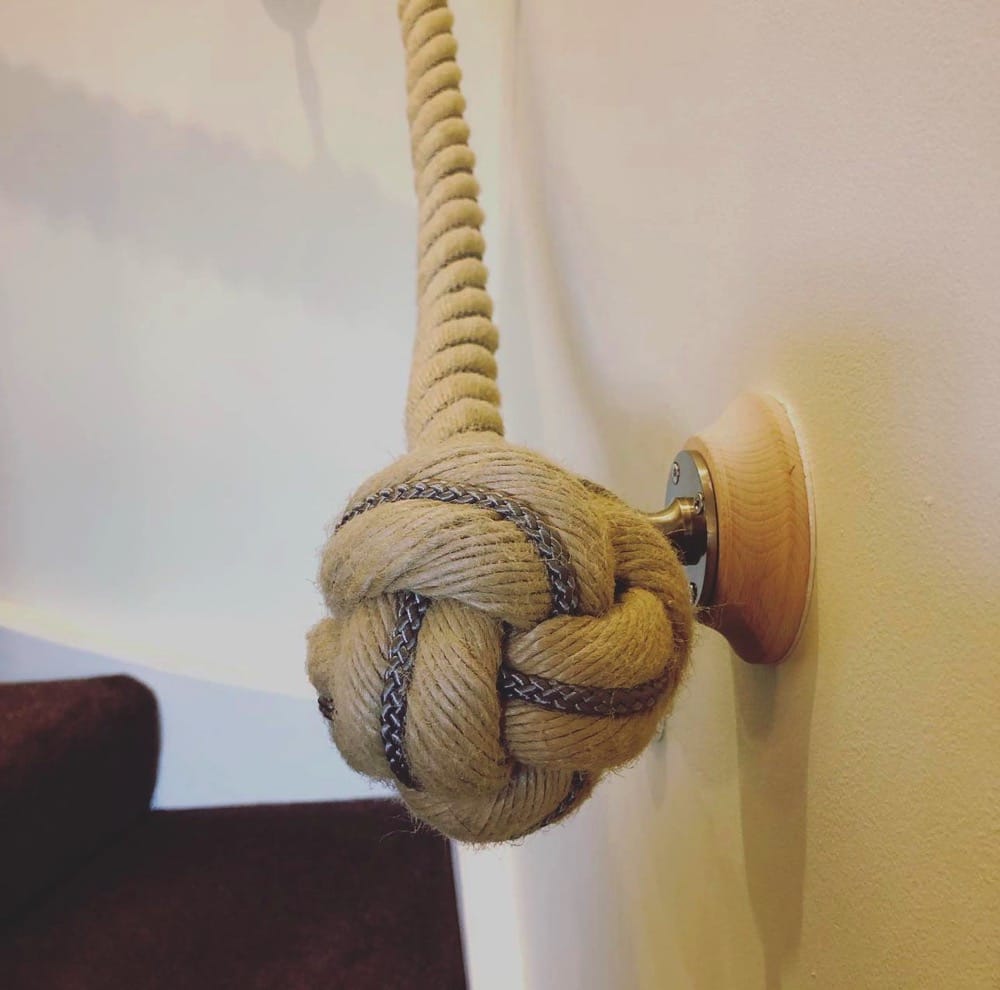Worming rope is a traditional technique that adds both functionality and style to rope products. While the practice has its roots in maritime applications, it has found a place in modern-day projects ranging from bannisters to outdoor decking. In this blog, we’ll explore everything you need to know about worming: what it is, which ropes are suitable, the materials used, and how to care for your wormed ropes.
Table of Contents
What is Worming?
Worming is a process where a smaller rope, known as the “worm,” is tightly wrapped into the grooves of a larger rope’s lay. The goal is to create a smoother, more uniform surface while also providing additional protection to the main rope. Historically used on ships to protect and extend the life of ropes, worming today serves both practical and decorative purposes.
Why Have a Rope Wormed?
Worming offers several benefits that make it a valuable addition to any rope project. Here are just a few reasons why you might choose worming:
- Enhanced Durability
Worming fills the grooves in a rope, reducing wear and tear on the strands. This makes the rope last longer, especially in applications where it faces constant friction or heavy use. - Improved Grip and Comfort
A wormed rope has a smoother surface, making it easier and more comfortable to handle. This is particularly beneficial for bannister or handrail ropes, where tactile comfort is essential. - Weather Protection
Worming adds an extra layer of protection, shielding the rope’s fibres from moisture, dirt, and other environmental factors. This is especially important for outdoor ropes used in decking or mooring. - Aesthetic Appeal
Worming can elevate the appearance of a rope, giving it a polished and professional finish. With a variety of colours and materials available, worming can be customised to suit any style or setting.
What Types of Ropes Can Be Wormed?
Not every rope is suitable for worming. To ensure the worming material stays securely in place, the rope must have a tight lay. This means the strands are firmly twisted together, leaving well-defined grooves for the worming to settle into.
Natural Fibre Ropes
When it comes to natural ropes, cotton is the only option that can be effectively wormed. Its smooth texture and tight lay make it perfect for decorative or light-use applications. Cotton ropes are commonly used indoors, particularly in bannisters or handrails where their soft, classic look is highly valued.
Synthetic Ropes
Synthetic ropes are much more versatile for worming, offering greater durability, resistance to the elements, and a wider range of colours. Suitable synthetic ropes include:
- Softline Multifilament Rope: Flexible and smooth, ideal for decorative or soft-touch applications.
- Synthetic Royal Blue Rope: A bold choice, perfect for outdoor or nautical-themed projects.
- Synthetic Grey Rope: Subtle and versatile, fitting modern or minimalist designs.
- Synthetic Navy Rope: A classic choice for marine-inspired projects.
- Synthetic Olive Rope: Blends seamlessly into natural or rustic outdoor settings.
- Synthetic Polyhemp Rope: Mimics the appearance of traditional hemp but with improved durability.
- Synthetic Red Rope: A vibrant option for eye-catching designs.
- Synthetic White Cotton Rope: Combines the look of natural cotton with synthetic strength.
- Synthetic Maroon Rope: A unique and sophisticated choice for bespoke projects.
These ropes are well-suited for both practical and decorative uses, ensuring the worming material stays firmly in place while enhancing the rope’s appearance and durability.
What Materials Are Used for Worming?
The choice of worming material depends on the intended use of the rope and the desired aesthetic. Common worming materials include:
- Braided Polypropylene: This synthetic material is lightweight, weather-resistant, and available in a wide range of vibrant colours. It’s a top choice for outdoor applications like decking or mooring ropes.
- Natural Jute: Offers a traditional, rustic look and is ideal for indoor use or low-moisture environments.
- Natural Cotton: Soft and flexible, cotton worming provides a classic finish and works beautifully for bannisters or decorative ropes.
The flexibility to mix and match colours and materials allows for a high degree of customisation, making worming an excellent way to personalise your rope.
What to Do When Worming Becomes Loose
Worming is designed to be durable, but it can occasionally loosen if the rope is mishandled. Here’s why this happens and how to fix it:
Why Does Worming Loosen?
Worming only becomes loose if the rope is twisted in the opposite direction of its lay. For example:
- A right-hand lay rope will unravel if twisted to the left.
- A left-hand lay rope will loosen if twisted to the right.
How to Fix Loose Worming
If the worming material begins to come undone:
- Gently re-wrap the worming into the grooves of the rope, following the direction of the lay.
- If the worming is frayed or damaged, replace it with new material to ensure a secure and tidy finish.
Proper handling and storage can prevent worming from loosening, keeping your rope in excellent condition.
Caring for Your Wormed Rope
To extend the life of your wormed rope, follow these simple care tips:
- Store it properly: Keep the rope in a dry, well-ventilated space to prevent moisture damage.
- Handle with care: Avoid twisting the rope against its lay to prevent the worming from loosening.
- Inspect regularly: Check for signs of wear, particularly if the rope is used outdoors or in high-friction environments.
Conclusion
Worming is a practical and decorative technique that enhances the durability, functionality, and appearance of ropes. Whether you need a smooth bannister rope, a weather-resistant decking rope, or a bold decorative statement, worming can be tailored to suit your needs.
At RopeServices UK, we specialise in handmade-to-order ropes, including a wide range of worming options in natural and synthetic materials. Whether you’re looking for a traditional finish or something vibrant and modern, we’ve got you covered.
Ready to transform your rope project? Explore our worming options and get in touch with our team today!


